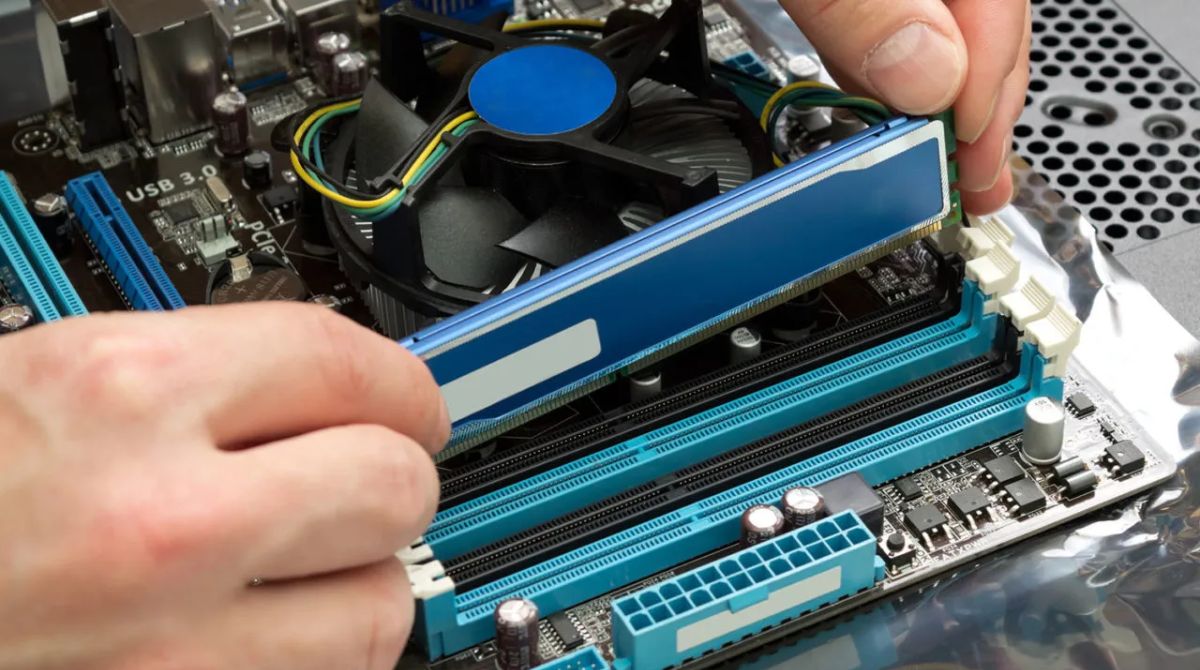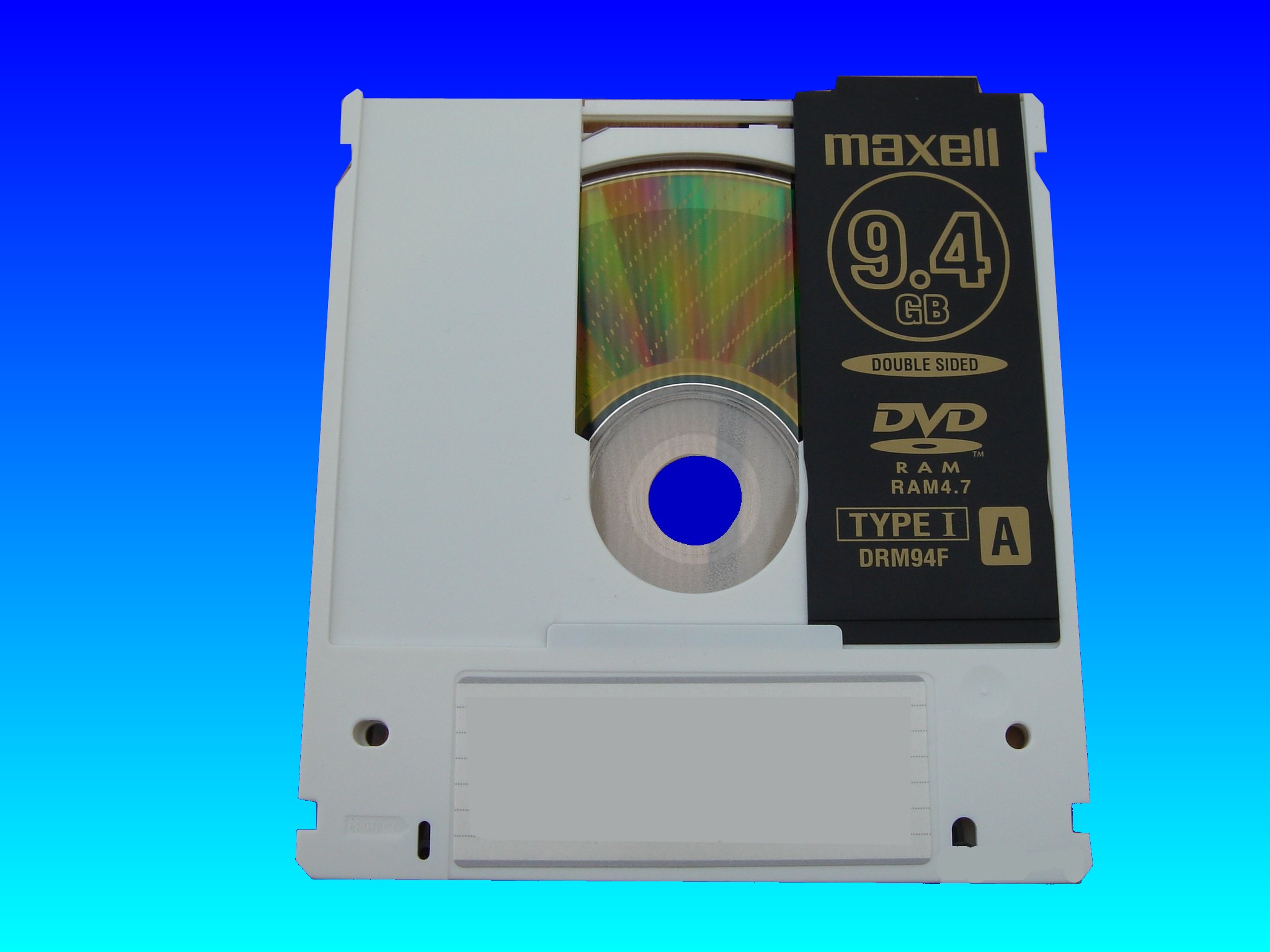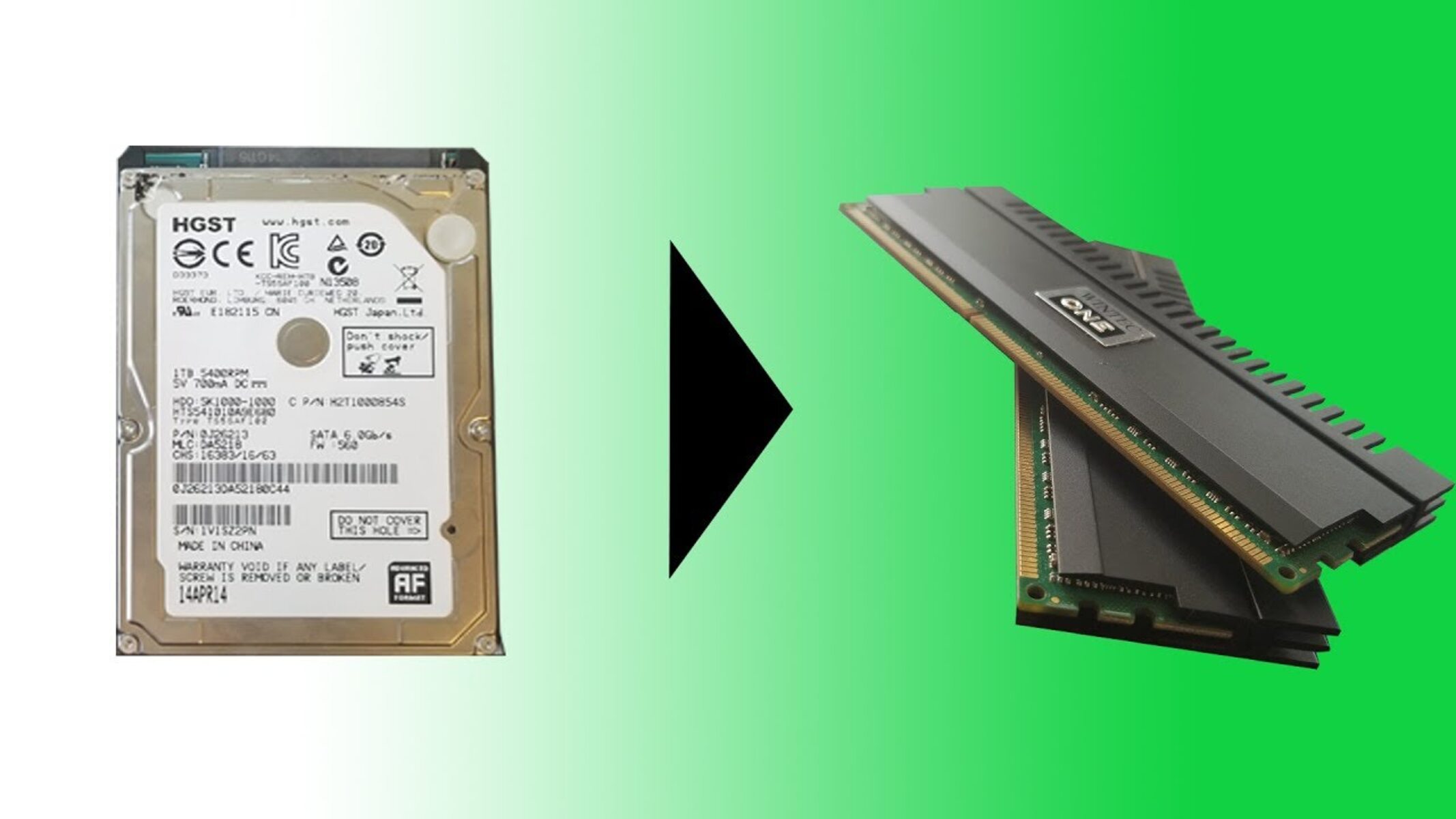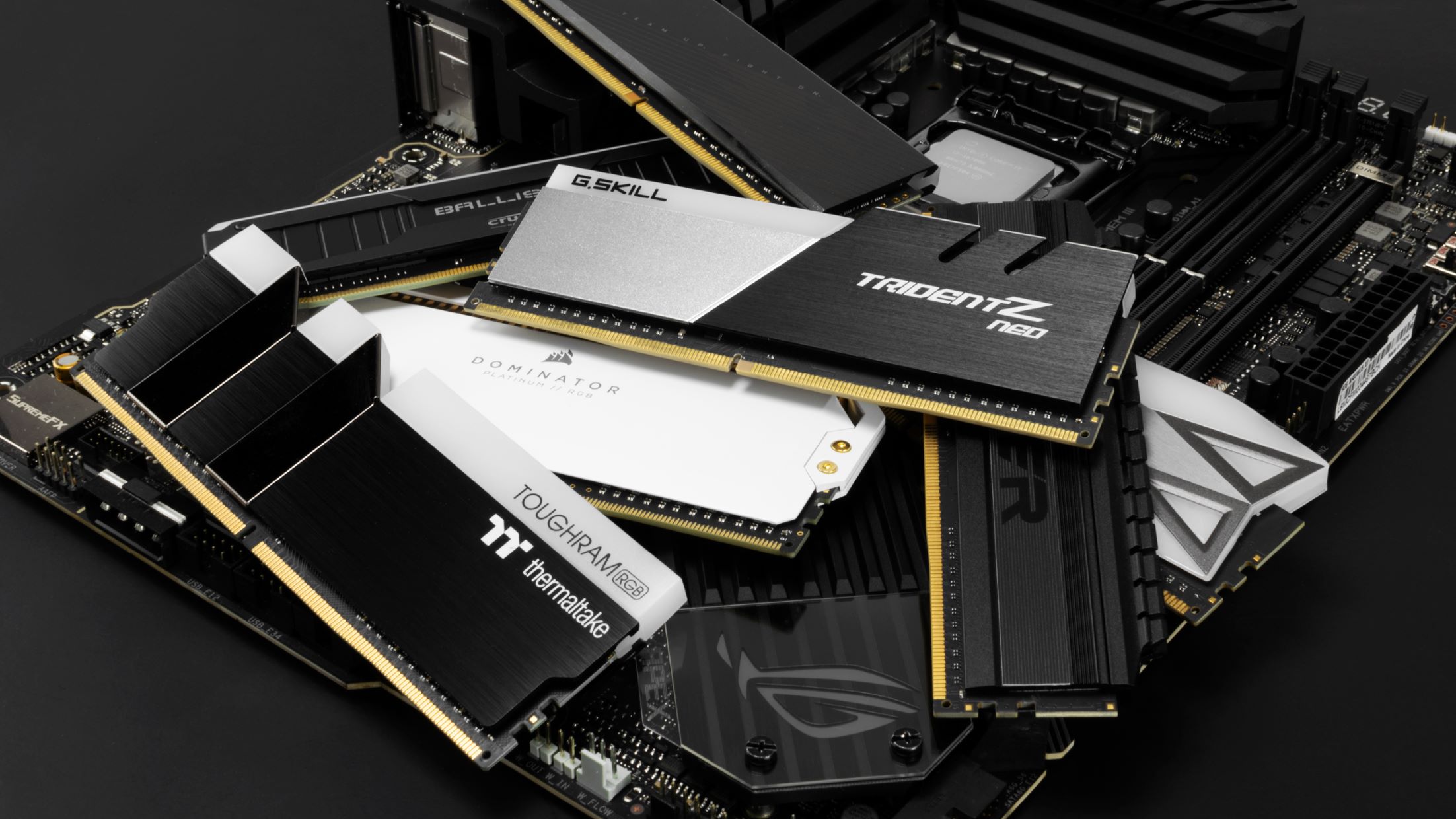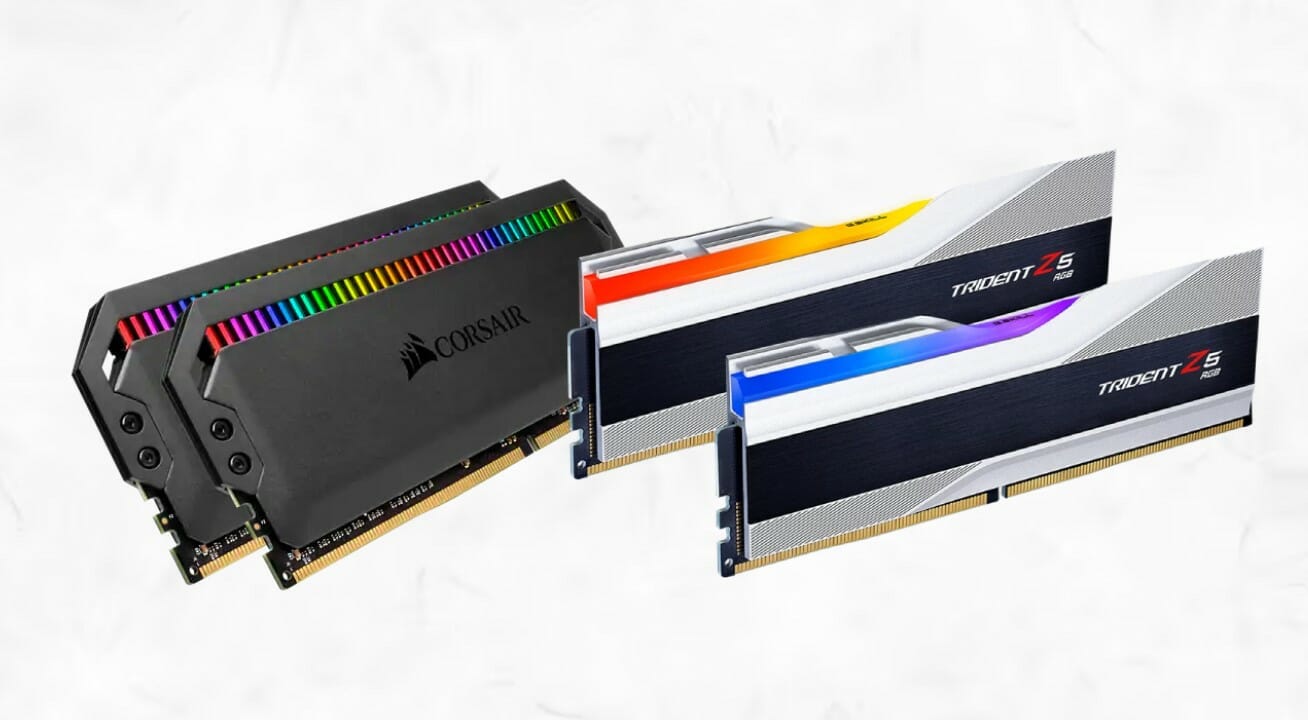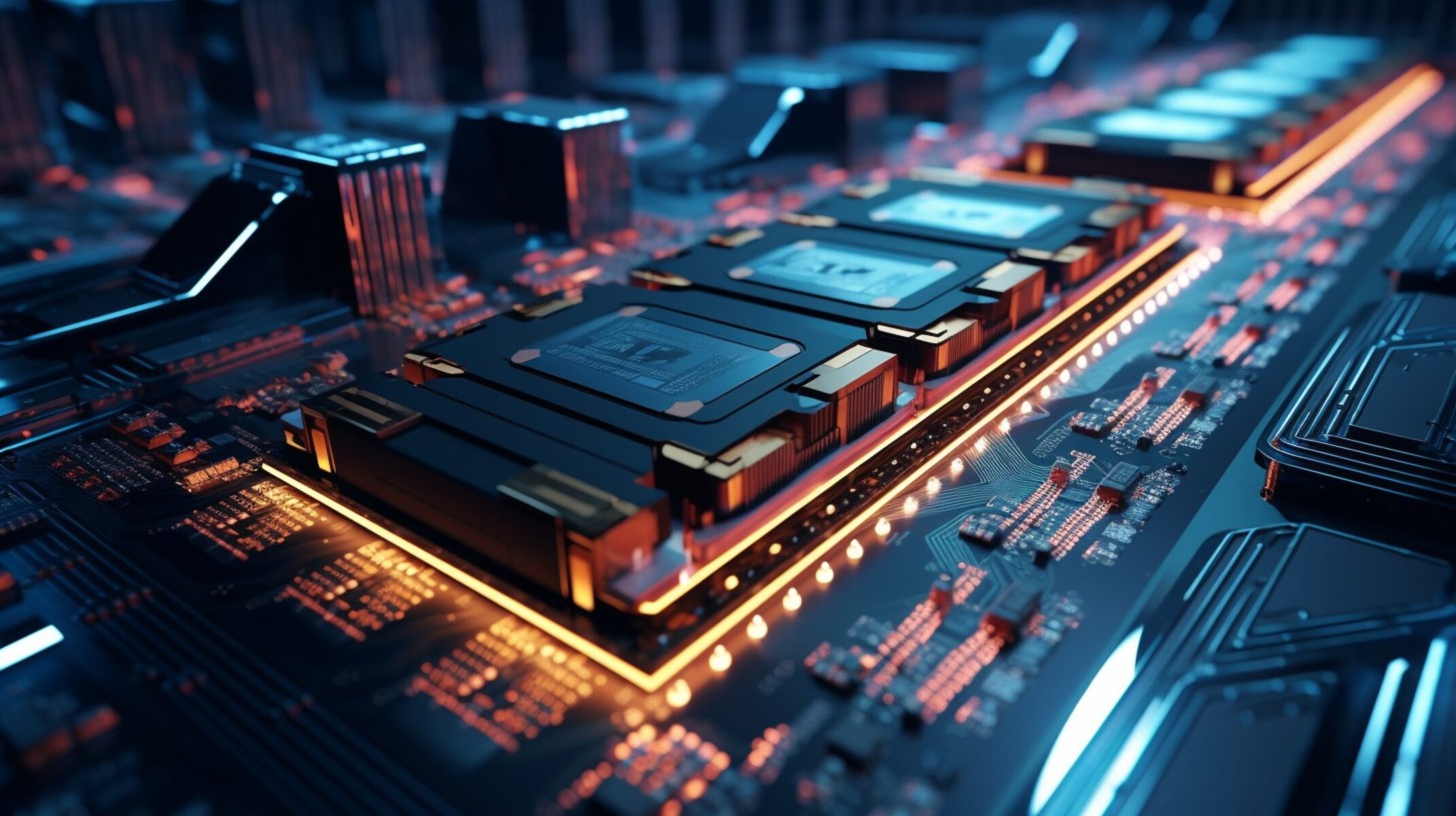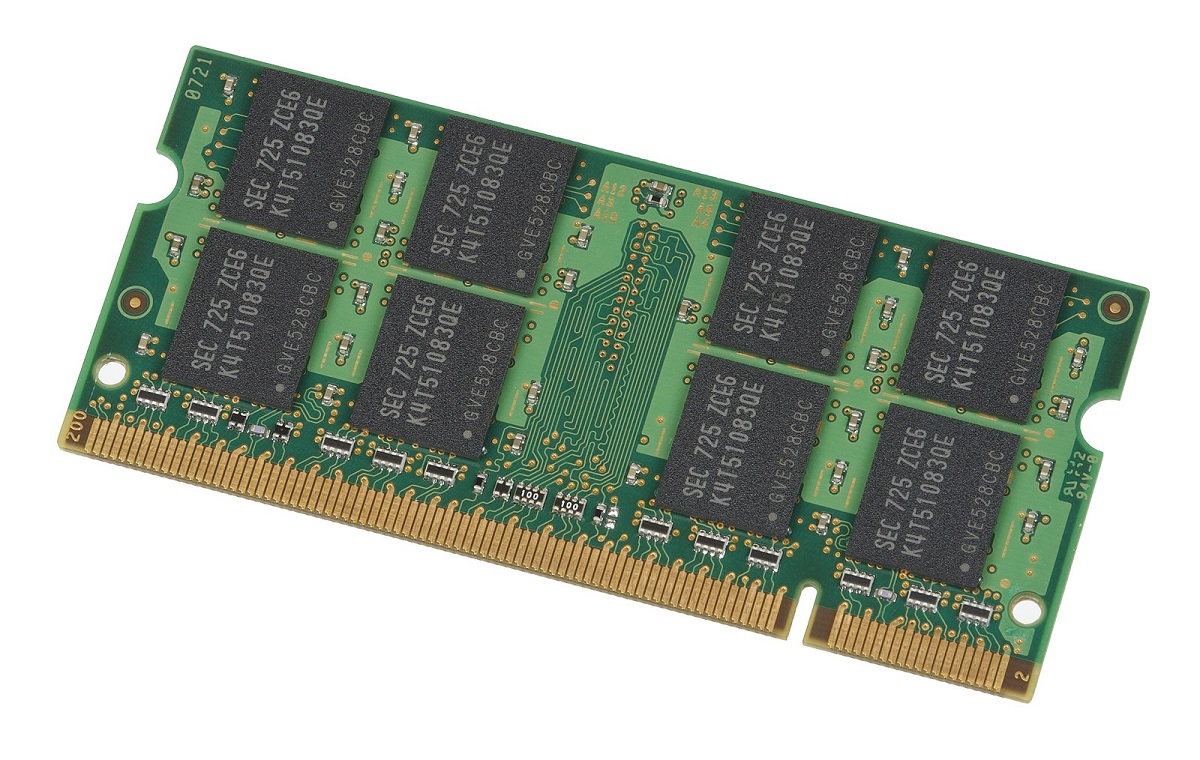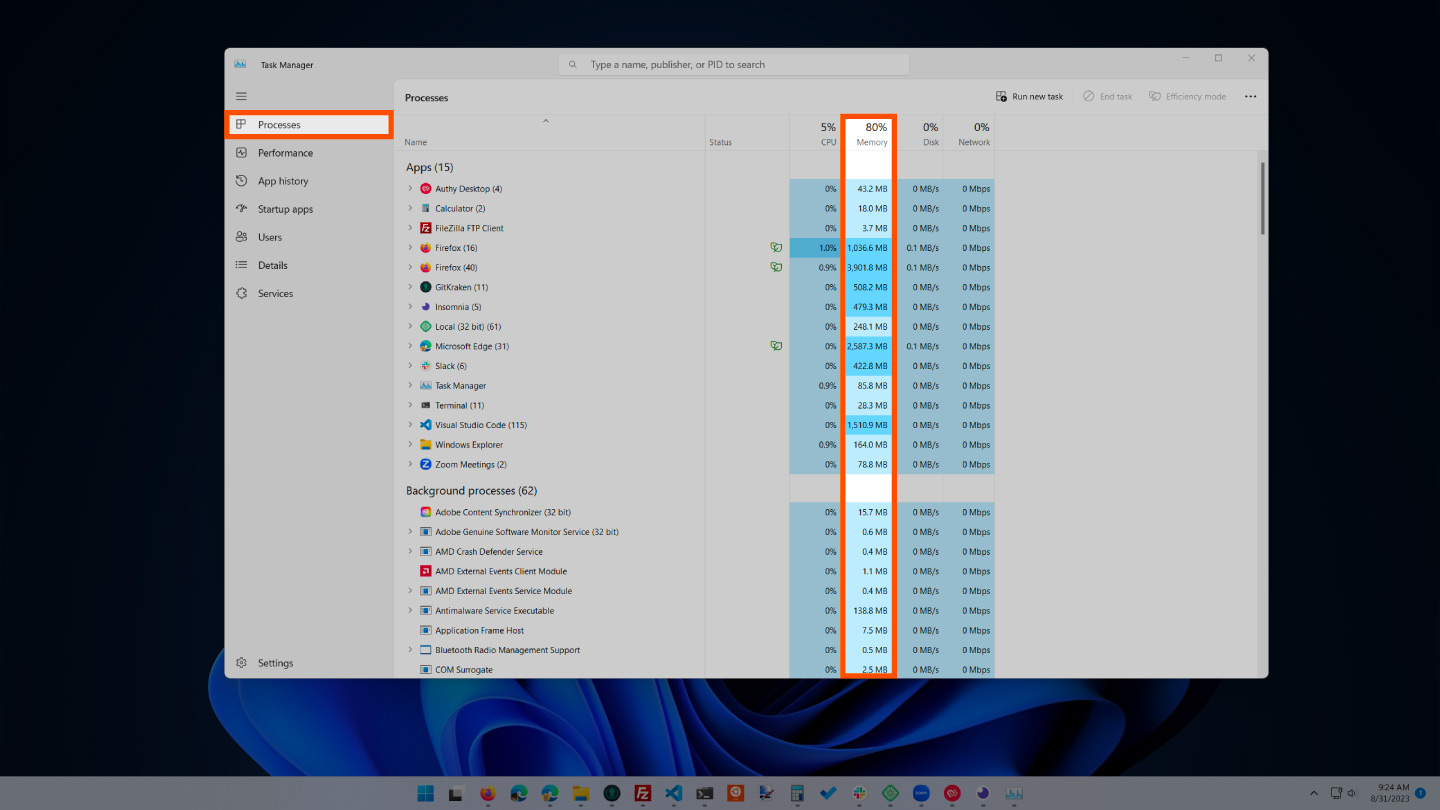Introduction
Welcome to the fascinating world of RAM Disk! In the world of digital storage, we are familiar with hard drives, solid-state drives (SSD), and even external storage devices. But have you ever wondered if there is a way to further optimize your computer’s performance by utilizing the power of your RAM? Enter RAM Disk, a technology that allows you to create a virtual disk drive using your computer’s memory.
RAM Disk, also known as a RAM drive or virtual RAM drive, is a temporary storage solution that uses your computer’s random-access memory (RAM) instead of traditional physical storage devices. It creates a virtual disk drive that acts like a regular hard drive or SSD, but with the incredible speed and responsiveness that only RAM can provide.
So, why would you need a RAM Disk? Well, imagine having an ultra-fast storage solution that can significantly improve the performance of your operating system, software applications, and even games. RAM Disk offers lightning-fast read and write speeds, making it ideal for tasks that require quick access to files and data.
Now that we have a basic understanding of RAM Disk, let’s dive deeper into how it works, its advantages and disadvantages, different use cases, how to set it up, and some tips for using it efficiently.
What is RAM Disk?
RAM Disk, also commonly referred to as a RAM drive or virtual RAM drive, is a software-based storage solution that utilizes your computer’s random-access memory (RAM) to create a virtual disk drive. Unlike traditional physical storage devices like hard drives or solid-state drives (SSD) that utilize mechanical components or flash memory, RAM Disk stores data in the volatile memory of your computer.
Essentially, RAM Disk takes a portion of your RAM and allocates it as a virtual disk drive that operates at lightning-fast speeds. It creates a temporary storage location that behaves like a physical drive, allowing you to store and access files and data with incredible speed and responsiveness.
One of the key advantages of RAM Disk is its speed. RAM is significantly faster than traditional storage devices, which results in quicker access to data stored on the RAM Disk. This makes it an excellent choice for tasks that require fast read and write speeds, such as multimedia editing, running virtual machines, database caching, and gaming.
Additionally, since RAM Disk operates solely in memory, it bypasses the limitations and bottlenecks often associated with mechanical hard drives or even solid-state drives. This means that file transfers, application launches, and overall system performance can experience a substantial boost by utilizing a RAM Disk.
It’s important to note that RAM Disk is a volatile storage solution, meaning that the data stored on the disk is lost when the computer is powered off or restarted. Therefore, it is crucial to have adequate backup measures in place if you plan on using RAM Disk for long-term storage purposes. However, for temporary storage needs or tasks that require frequent access to data, RAM Disk can be an invaluable tool.
Now that we have a clear understanding of what RAM Disk is and how it works, let’s explore the advantages and disadvantages of using this technology.
How Does RAM Disk Work?
To understand how RAM Disk works, let’s break it down into a few key steps:
- Allocation: When you set up a RAM Disk, you allocate a portion of your computer’s RAM to be used as a virtual disk drive. This typically involves specifying the size of the RAM Disk, which can be smaller or larger depending on your needs and available memory.
- Formatting: Once the RAM Disk is allocated, it needs to be formatted with a file system, just like any other storage device. Common file systems used for RAM Disk include FAT32, NTFS, or exFAT. This formatting process allows the RAM Disk to be recognized by the operating system and used like a regular disk drive.
- Access: With the RAM Disk in place, you can now start using it as you would a physical storage device. You can save files, install applications, and perform read and write operations on the RAM Disk, just like you would on a hard drive or SSD.
- Performance: One of the key advantages of RAM Disk is its exceptional performance. Since the data is directly accessed from the computer’s memory, read and write speeds are significantly faster compared to traditional storage mediums. This makes RAM Disk ideal for tasks that require quick access to large files or frequent data transfers.
It’s important to note that RAM Disk operates in the volatile memory of your computer. This means that the data stored on the RAM Disk is only accessible when the computer is powered on. Once the computer is shut down or restarted, the contents of the RAM Disk are lost. Therefore, it is crucial to regularly back up any critical data or ensure that the RAM Disk is used for temporary storage, where data loss is not a concern.
Some operating systems, such as Windows, offer built-in tools or third-party software that simplifies the creation and management of RAM Disks. These tools allow you to easily allocate memory, format the RAM Disk, and specify settings such as drive letter assignments and persistence options.
Now that we understand how RAM Disk works, let’s explore the advantages and disadvantages of using this technology.
Advantages of Using RAM Disk
RAM Disk offers several advantages that make it an appealing choice for various use cases. Let’s explore some of the key advantages:
1. Speed: RAM Disk provides lightning-fast access speeds that surpass traditional storage devices. Since data is stored in the computer’s memory, read and write operations are significantly quicker, resulting in improved overall system performance. This makes RAM Disk ideal for tasks that require rapid data transfers, such as running virtual machines, video editing, or database caching.
2. Reduced Latency: With RAM Disk, there is no mechanical movement or data retrieval required, as data is accessed directly from the memory. This eliminates the latency associated with traditional hard drives or SSDs, resulting in near-instantaneous access to files and data. This reduced latency can greatly enhance the responsiveness of your applications and operating system.
3. Improved Application Performance: Applications that rely heavily on disk read and write operations can benefit greatly from the use of RAM Disk. By utilizing the superior speed and low latency of RAM, applications can load and save data much faster, leading to improved overall performance and a smoother user experience.
4. Temporary Storage: RAM Disk is an excellent solution for temporary storage needs. It allows you to create a temporary working space for storing files that are only needed for a short period. Since the contents of a RAM Disk are lost upon restarting the computer, you can benefit from the additional storage without worrying about cluttering your hard drive or SSD with unnecessary files.
5. Privacy and Security: Data stored on a RAM Disk is volatile, meaning it disappears when the computer is turned off. This can be advantageous for situations where data privacy and security are a concern. You can use RAM Disk to store sensitive files temporarily, ensuring that no traces are left behind after shutting down the system.
6. Reduced Wear and Tear on Hardware: Since data is stored in the RAM and not on mechanical or electronic storage devices, RAM Disk minimizes wear and tear on hardware components such as hard drives or SSDs. This can potentially extend the lifespan of your storage devices, reducing the need for frequent replacements.
7. Easy Setup and Configuration: Setting up a RAM Disk is relatively straightforward, especially with the availability of user-friendly tools and software. Many operating systems provide built-in utilities or third-party applications that simplify the process of creating and managing RAM Disks, making it accessible even for less experienced users.
Overall, RAM Disk offers unparalleled speed, reduced latency, improved performance, and temporary storage capabilities that can greatly enhance your computing experience. However, it is essential to consider the limitations and ensure you have proper backup measures in place, as data stored on a RAM Disk is volatile and lost upon system shutdown. Let’s now explore some of the disadvantages of using RAM Disk.
Disadvantages of Using RAM Disk
While RAM Disk offers numerous advantages, it is important to consider its limitations and drawbacks. Let’s explore some of the key disadvantages of using RAM Disk:
1. Volatile Storage: The volatile nature of RAM Disk is both an advantage and a disadvantage. While it allows for fast and temporary storage, it also means that data stored on a RAM Disk is lost when the computer is powered off or restarted. This makes RAM Disk unsuitable for storing critical or long-term data, requiring you to have proper backup measures in place.
2. Limited Storage Capacity: RAM Disk size is limited to the available RAM on your computer. Compared to traditional storage devices, the maximum capacity of a RAM Disk is relatively small. If you have a limited amount of RAM, you may not be able to allocate enough space to create a sizable RAM Disk.
3. Memory Resource Usage: Creating a RAM Disk requires dedicating a portion of your computer’s RAM. This can potentially impact the overall system performance, especially if you allocate a significant amount of memory to the RAM Disk. If your system has limited RAM, the allocation to the RAM Disk could negatively affect the performance of other applications and processes.
4. Data Loss Risk: Since RAM Disk is a volatile storage solution, any unsaved data or changes made to files are lost when the computer is shut down or restarted. This makes RAM Disk unsuitable for projects or tasks that require long-term data retention or frequent save operations. Regular, scheduled backups are crucial if you are using RAM Disk for important work.
5. Cost: While RAM Disk itself is a software-based solution, it requires a sufficient amount of RAM to create a sizable virtual disk drive. Upgrading your RAM to accommodate a larger RAM Disk can be costly, especially if you need a substantial amount of memory.
6. System Dependency: Not all operating systems provide built-in support for RAM Disk. While tools and third-party software are available to create and manage RAM Disks, the level of compatibility and functionality can vary across different systems. It is important to ensure that your operating system supports RAM Disk or find appropriate software for your specific system requirements.
7. Unpredictable Power Loss: If your computer unexpectedly loses power or experiences a sudden shutdown, any data stored on a RAM Disk will be lost. This can be a concern if you are working on critical projects or storing important temporary files. It is important to save your work frequently and consider using a backup power source to mitigate this risk.
Despite these disadvantages, RAM Disk can still offer significant benefits for specific use cases. Understanding the limitations and implementing proper backup measures can help you make the most out of this technology. In the next section, we will explore the different uses of RAM Disk.
Different Uses of RAM Disk
RAM Disk has a wide range of applications and can be utilized in various scenarios to enhance performance and productivity. Let’s explore some of the different uses of RAM Disk:
1. Cache and Temp Files: One common use of RAM Disk is as a cache or temporary file storage. By allocating a portion of RAM to a RAM Disk, you can store frequently accessed files, browser cache, or temporary files generated by applications. This can significantly reduce read and write times, improving the overall speed and performance of your system.
2. Virtual Machines: RAM Disk can be incredibly useful for running virtual machines (VMs). Since VMs often require fast access to large files and data, using a RAM Disk as temporary storage for VM images or disk caching can greatly enhance the performance of the virtual environment.
3. Database Caching: RAM Disk is well-suited for database caching. By storing frequently accessed database files in RAM, you can minimize disk I/O operations and reduce latency, resulting in faster data retrieval and improved database performance. This can be particularly beneficial in high-demand environments with large databases.
4. Gaming: Gamers can benefit from RAM Disk by using it as a cache for game files and assets. This can significantly reduce loading times, improve game performance, and provide a smoother gaming experience with reduced stuttering and lag.
5. Video Editing and Rendering: RAM Disk is highly advantageous for video editing and rendering tasks. By storing project files, temporary files, and video assets on a RAM Disk, you can experience faster video rendering times and seamless playback, allowing for smoother editing workflows.
6. Software Testing and Development: RAM Disk can be valuable for software testing and development. By using RAM Disk as a virtual disk drive for testing environments or temporary storage for compiling and running code, developers can enhance the speed and efficiency of their development processes.
7. Live Operating System: RAM Disk can be utilized to create a live operating system environment. By loading a lightweight operating system into a RAM Disk, you can run an entire operating system directly from memory, providing a fast and secure environment for browsing, testing software, or troubleshooting.
It’s worth noting that the use cases for RAM Disk are not limited to the examples mentioned above. Depending on your specific needs and creativity, RAM Disk can be employed in various other scenarios where speed, temporary storage, and quick access to files are crucial.
In the next section, we will discuss how to set up a RAM Disk and provide some tips for using it efficiently.
How to Set Up a RAM Disk
Setting up a RAM Disk may vary depending on your operating system. Here’s a general step-by-step guide on how to set up a RAM Disk:
1. Determine Available RAM: Check the total amount of RAM available on your computer. This information will help you determine the size of the RAM Disk you can create without impacting the overall system performance.
2. Choose the Right Tool: Determine whether your operating system has built-in support for RAM Disk creation or if you need to use third-party software. Windows, for example, has a built-in tool called “ImDisk” that allows you to create RAM Disks. On Linux, you can use the “tmpfs” filesystem to create a RAM Disk.
3. Allocate the RAM: Once you have determined the appropriate tool or software, allocate a portion of your available RAM to the RAM Disk. Specify the size or capacity of the RAM Disk during the set-up process. Make sure to leave enough RAM for your operating system and other applications to function smoothly.
4. Format the RAM Disk: After allocating the RAM, you will need to format the RAM Disk with a file system. Choose a suitable file system, such as FAT32 or NTFS, depending on your requirements and compatibility.
5. Assign a Drive Letter: Once the RAM Disk is formatted, assign a drive letter to it, similar to any other storage device. This will make it recognizable by the operating system and allow you to easily access and manage the RAM Disk.
6. Configure Persistence (Optional): Some RAM Disk tools or software allow you to configure persistence, which means saving the contents of the RAM Disk to storage when the computer is shut down or restarted. This can be useful if you want to retain the data stored on the RAM Disk between sessions. However, keep in mind that persistence will impact system boot time.
7. Start Using the RAM Disk: With the RAM Disk set up and configured, you can start using it as you would any other disk drive. Save files, install applications, and perform read and write operations on the RAM Disk. Remember that the data stored on the RAM Disk will be lost when the computer is powered off or restarted.
It’s important to refer to the documentation or user guide of the specific RAM Disk tool or software you are using, as the setup process may have slight variations depending on the software.
In the next section, we will provide some tips for using RAM Disk efficiently to get the most out of this technology.
Tips for Using RAM Disk Efficiently
To ensure optimal performance and efficiency when using a RAM Disk, consider implementing the following tips:
1. Allocate the Right Amount of RAM: Carefully determine the amount of RAM to allocate to the RAM Disk. Allocating too little may result in insufficient space for your needs, while allocating too much can impact the overall system performance. Find a balance that meets your requirements without overburdening your system.
2. Use RAM Disk for Temporary Storage: RAM Disk is best suited for temporary storage needs rather than long-term storage. Keep in mind that data stored on a RAM Disk is lost when the computer is shut down or restarted. Therefore, use it for tasks that require fast and temporary access to files, such as caching or temporary workspaces.
3. Regularly Backup Important Data: Since data on a RAM Disk is volatile, it is crucial to regularly back up any important files or data stored on the RAM Disk. Establish a backup routine to ensure the safety of your critical work or projects.
4. Monitor Available RAM: Keep an eye on your available RAM, especially if you have allocated a significant amount to the RAM Disk. Make sure there is enough free memory for the operating system and other applications to function optimally.
5. Optimize File Access: Organize your files and applications effectively on the RAM Disk to optimize access times. Consider placing frequently used files or applications on the RAM Disk for faster read and write operations.
6. Set RAM Disk as Page File Location: If your operating system allows it, consider configuring the RAM Disk as the location for the page file. The page file, also known as virtual memory, is used when your computer exceeds its physical memory capacity. By placing the page file on the RAM Disk, you can further enhance system performance.
7. Regularly Restart your Computer: To ensure a clean environment and prevent excessive memory usage, restart your computer regularly. This will clear the contents of the RAM Disk and free up memory for optimal performance.
8. Consider System Backup Power: Since the data stored on a RAM Disk is lost upon sudden shutdown or power loss, consider using a backup power source, such as an Uninterruptible Power Supply (UPS), to mitigate the risk of data loss.
By following these tips, you can make the most of your RAM Disk setup and ensure efficient use of this technology. Remember to adapt these tips to your specific use case and regularly evaluate the performance of your RAM Disk configuration.
In the final section, we will recap the key points discussed and offer some final thoughts on using RAM Disk effectively.
Conclusion
RAM Disk is a powerful storage solution that utilizes the speed and responsiveness of your computer’s RAM to create a virtual disk drive. It offers numerous advantages, including fast access speeds, reduced latency, improved application performance, and temporary storage capabilities. By allocating a portion of your RAM to a RAM Disk, you can enhance the performance of tasks such as gaming, video editing, database caching, and virtual machine operations.
However, it’s important to keep in mind the limitations and disadvantages of RAM Disk. The volatile nature of RAM Disk means that data is lost when the computer is shut down or restarted, making it unsuitable for long-term storage. It also requires careful management of available RAM and consideration of backup measures for critical data. Additionally, the setup process and compatibility may vary depending on the operating system and tools used.
To set up a RAM Disk efficiently, allocate the right amount of RAM, use it for temporary storage needs, regularly backup important data, monitor available RAM, optimize file access, and consider configuring the RAM Disk as the page file location. Regularly restarting your computer and considering a backup power source can also contribute to an effective RAM Disk setup.
In conclusion, RAM Disk is a valuable technology for users who require fast and temporary storage solutions. By understanding its capabilities, limitations, and best practices, you can leverage RAM Disk to significantly improve system performance and productivity. Whether you’re a gamer, video editor, software developer, or need quick access to files, RAM Disk can be a game-changer in optimizing your computer’s performance.







